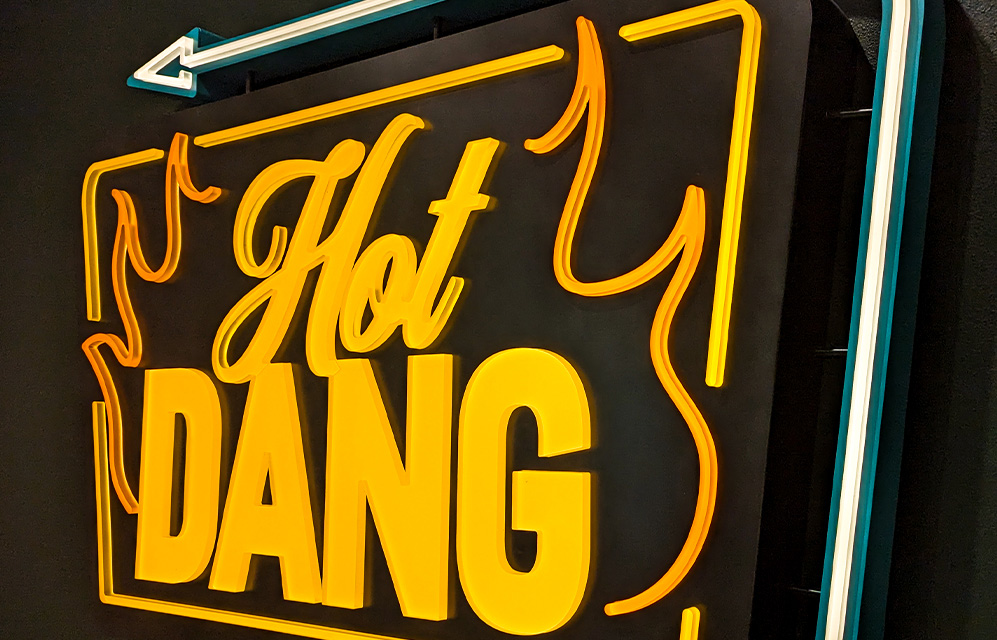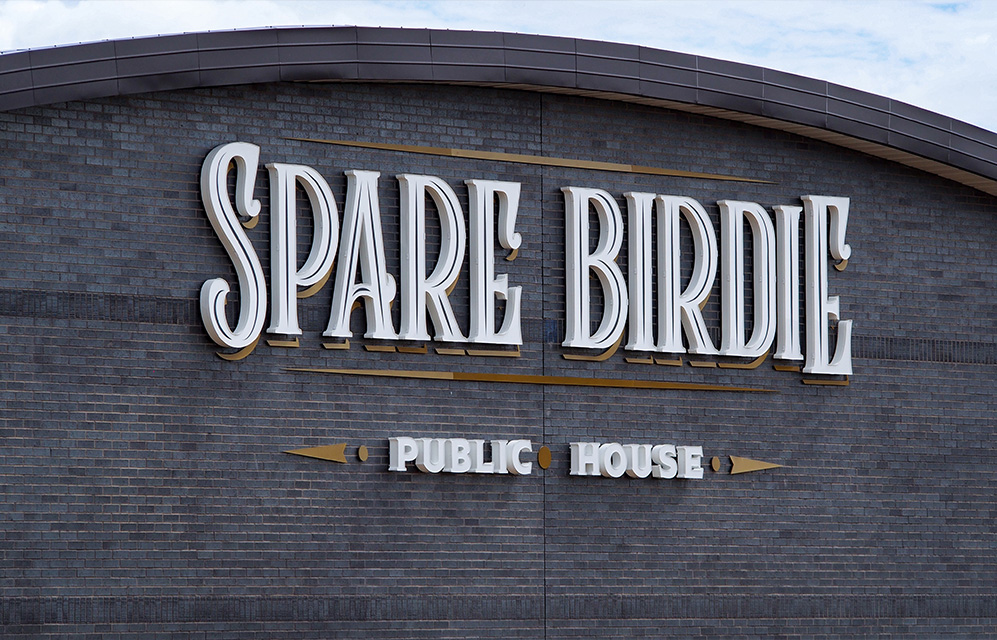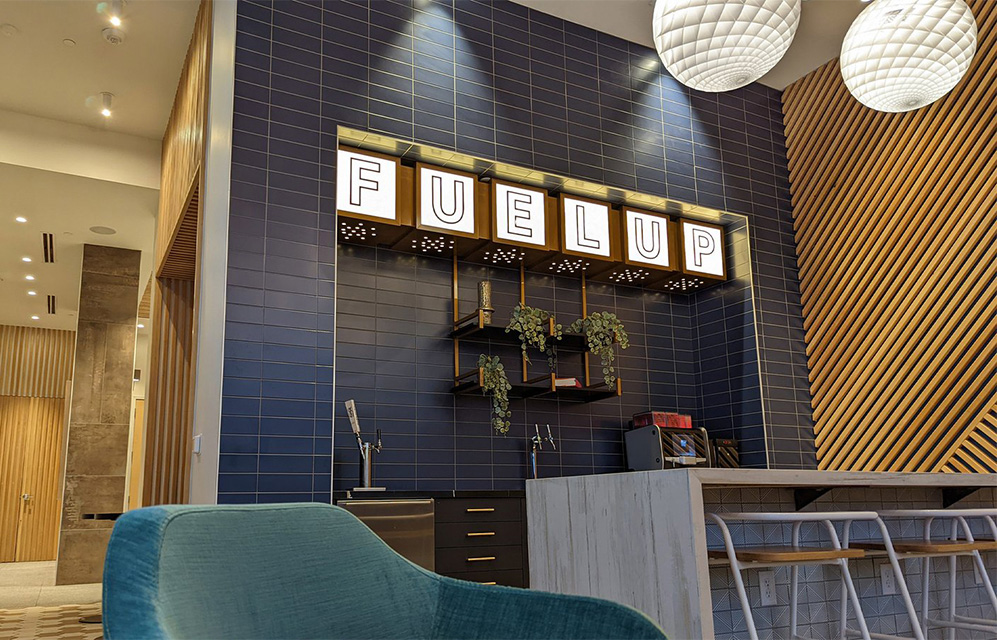Photo: Studio Dzo.
At Studio Dzo, our guiding principle, “Do Good Work,” manifests in our brand-elevating design and exceptional service. With a rich background spanning fifteen years as a designer, art director, creative director, owner, and design professor, I’ve navigated the intricacies of working with, training, hiring, and occasionally parting ways with designers at various levels. The journey has been an invaluable source of insights gleaned from both successful hires and learning experiences from less-than-ideal ones.
Welcoming a new team member, particularly a designer, is a thrilling prospect, and the entire team should enthusiastically embrace both the opportunity and the accompanying process.
The question arises: how does a sign shop identify and recruit outstanding designers? Is there a specialized institution churning out graduates with a focus on “Sign Design,” or perhaps a certification ensuring proficiency in crafting monuments and pylons? The answer is no.
Regardless of the quantity of applicants received, the emphasis should be on quality. Designers possess a keen eye for their peers, and by cultivating a reputation as a workplace that fosters greatness—much like the ethos at my own shop—you’ll discover that designers will actively seek you out, eager to be part of your creative endeavors.
In the pursuit of hiring a designer, there are essential Dos and Don’ts to bear in mind.
Do: Make It Easy.
We believe in transparency. If you’re considering joining us, we want you to have all the information you need. Here’s a clear overview of the role, its responsibilities, salary, and benefits.
Role: We’re on the lookout for a skilled designer to join us at [Your Company Name]. Your daily contributions will include [brief overview of day-to-day responsibilities].
Salary Range: Competitive pay, ranging from [Minimum] to [Maximum]. We believe in fair compensation for exceptional talent.
Benefits: More than just a paycheck, we offer [mention any notable benefits, e.g., health insurance, flexible work hours]. We’re committed to values and integrity, evident in our work showcased on our website.
Company Values: Easily discover our values and purpose on our website. It’s a showcase of our completed projects and the talented individuals who define us. No mysteries—just transparency.
Digital Presence: In the digital age, we stay current. Our website reflects our success, unlike some outdated ones out there. We don’t rely solely on social media for our identity.
Application Process: We keep it simple. No forms, lengthy cover letters, or professional references needed. Just share a link to your design portfolio. No portfolio? Unfortunately, we won’t proceed with an interview. A resume is a bonus if you have one.
Qualifications: Sign design is an unconventional journey. While a four-year degree is appreciated, we value diverse paths and creativity over a rigid checklist. No need for a decade of experience—we’re open-minded.
Making the application process easy benefits everyone—especially you. Let’s connect and explore together.
 Photo: Studio Dzo.
Photo: Studio Dzo.
Focus on “Generalists”:
While it may be tempting to seek out experts proficient in specific software like SketchUp or AutoCAD, it’s essential to consider the broader perspective.
Specializing in a particular area can become a limitation when the nature of work evolves or when assistance is needed during project influx. Narrowing the focus risks losing sight of the overall picture.
Instead, lean towards hiring design generalists. Seek individuals with a diverse portfolio showcasing a strong grasp of design fundamentals—concept, composition, color, and typography. A designer with a varied range of work is likely to possess the adaptability needed to swiftly comprehend the intricacies of sign design and fabrication.
Opt for a well-rounded designer who can seamlessly transition with new projects or evolving design trends. This versatility ensures you have a valuable asset you can consistently rely on.
Pay Attention to Details:
While finding a candidate with top-tier talent, a strong work ethic, and a great personality is the ideal scenario, the reality is that some skills can be learned, while others are inherent. I prioritize three key “soft” skills during the hiring process: (1.) the ability to follow instructions, (2.) communication, and (3.) punctuality.
The ability to follow instructions may seem basic, but it quickly reveals itself in the hiring process. Even with straightforward application instructions like “submit your resume and a link to your design portfolio,” I’ve encountered responses lacking resumes, featuring photo attachments, or including links to Instagram accounts. The question arises: Did you even read the job post?
Effective communication is fundamental in design. How, when, and if someone responds to emails provides valuable insights into their collaborative potential. Punctuality, or its absence, speaks volumes about an individual’s respect for time.
In the world of sign projects, deadlines are crucial. If a candidate struggles with punctuality during the hiring process, it’s a red flag for their future adherence to deadlines if brought on board.
 Sketch process. Photo: Studio Dzo.
Sketch process. Photo: Studio Dzo.
Avoid: Equating “Being a Designer” with “Knowing Software.”
Every sign project presents unique challenges that demand thoughtful and deliberate design solutions. Designers aren’t merely “pixel pushers”; they’re problem solvers. If you believe that a designer is only someone proficient in design software, you’re undervaluing the strategic, problem-solving, and creative aspects of their role, wasting both time and money.
When hiring a designer, recognize that you’re bringing on a strategist and creative thinker. Provide them the freedom, time, and space to ponder, explore, and develop the exceptional work you expect. Unless you’re also a designer, your shop won’t receive design accolades if your designers are constantly being directed by you, your sales team, or your clients.
Effective design teams thrive on open and collaborative discussions. Clearly communicate project challenges and goals, trusting that your designers are capable of delivering what you’re paying them to do. If you’re seeking someone merely to execute your ideas as a “pixel pusher,” plenty of freelancers are willing to take that role, leaving you with the thinking and problem-solving.
Avoid: Requiring Design Skills Tests.
The tradition of asking designers to complete a “design skills test” is outdated and counterproductive. It not only reflects a lack of trust and professionalism but also amounts to requesting free work. Design is a skilled position that requires education, practice, and experience. Questioning a candidate’s abilities showcased in their portfolio demonstrates a lack of knowledge and experience on the part of the employer.
Skills tests don’t substantiate much. Instead of asking for tests, inquire if the candidate can share a source file from a recent project. If you’re unfamiliar with what to look for, seek input from a designer on your team or in your network. Examining source files allows you to assess the candidate’s understanding of building production files and the cleanliness of their work without requiring additional effort from them. Any designer worth considering for hire should have files readily available for review.
 Photo: Studio Dzo.
Photo: Studio Dzo.
Avoid: Chasing Unicorns.
While many design skills are versatile across industries, expecting a designer to embody every skill under the sun is unrealistic. A design generalist can bring valuable experience, like transitioning from logo design to crafting ADA-compliant signage and wayfinding solutions.
However, it’s crucial to remember you’re hiring a designer, not a mythical unicorn. Don’t burden them with unrealistic expectations of also being a project manager, salesperson, web designer, copywriter, photographer, social media manager, and illustrator all rolled into one.
In reality, unicorns don’t exist. Piling diverse tasks onto your sign designers can hinder the success of your design team. It detracts from their primary role, leading to resentment, frustration, burnout, and ultimately, turnover.
Show respect for the designer’s role by defining specific job-related responsibilities. Establish clear boundaries to allow designers to focus on what they were hired to do. This approach not only preserves their well-being but also enhances the quality of work they produce, contributing to the overall success of your business.
Russell Toynes is the owner of Studio Dzo, a multidisciplinary environmental and graphic design studio based in Austin, Texas.




